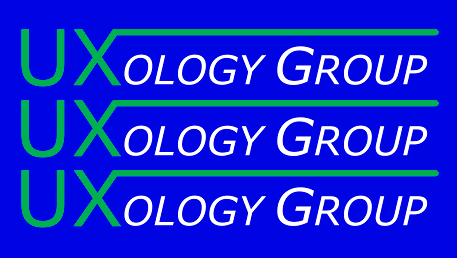REMOTE LAB-BASED FIELD-BASED
OUR REMOTE, LAB, AND FIELD-BASED CONSULTING SERVICES PROVIDE RESEARCH-BASED UX INSIGHTS TO PRODUCT TEAMS WORLDWIDE.
OUR REMOTE, LAB, AND FIELD-BASED CONSULTING SERVICES PROVIDE RESEARCH-BASED UX INSIGHTS TO PRODUCT TEAMS WORLDWIDE.

 Our typical clients are mid-sized or larger companies, which understand the value of User Experience and want help identifying opportunities to improve it. We also do business with agencies which are servicing clients of their own and need a specialized research consultancy such as ours, in which case we are happy to work in collaboration with them and their clients or as a white-labeled service.
Our typical clients are mid-sized or larger companies, which understand the value of User Experience and want help identifying opportunities to improve it. We also do business with agencies which are servicing clients of their own and need a specialized research consultancy such as ours, in which case we are happy to work in collaboration with them and their clients or as a white-labeled service.
 Since we only do research, and no design or development, we are truly impartial because we're never in the position of testing our own products. This means you can count on us as the 100% neutral partner who delivers unbiased, honest, sometimes even hard-to-swallow insights that your product team can leverage to enhance your UX.
Since we only do research, and no design or development, we are truly impartial because we're never in the position of testing our own products. This means you can count on us as the 100% neutral partner who delivers unbiased, honest, sometimes even hard-to-swallow insights that your product team can leverage to enhance your UX.
 In addition to the standalone offerings listed below, we also provide a number of proprietary service packages for clients in need of ongoing UX Research. From customized projects specially built for product teams approaching redesigns or launching new products, to monthly or quarterly UX Testing programs, and more, contact us today to discover how The UXology Group empowers organizations like yours with the power of invaluable UX insights.
In addition to the standalone offerings listed below, we also provide a number of proprietary service packages for clients in need of ongoing UX Research. From customized projects specially built for product teams approaching redesigns or launching new products, to monthly or quarterly UX Testing programs, and more, contact us today to discover how The UXology Group empowers organizations like yours with the power of invaluable UX insights.
Field-based UX Testing goes directly to where people are using your products, in their natural contexts, such as homes, offices, and retail environments.
Ethnography is a social science method that has evolved for centuries. It's all about observing people in the context of interest as they go about their daily lives and business.
Remote UX Testing, through web conferencing and modern research software, is for websites, software, and mobile applications. It’s cost-effective and removes geographic barriers.
Any UX Test can be expanded to include competitor products too. This allows direct comparison to competitors, which is valuable for benchmarking and roadmapping initiatives.
Applying the art of knowledge elicitation techniques to interview stakeholders, users, and subject-matter experts is something we're very well versed in.
As an exploratory method, contextual inquiries consist of observing users in a natural environment as they interact with the technology of interest.
A fast and affordable method of identifying UX issues is through Expert Reviews, where a team of 3-5 professionals evaluate your prototype or product from the users' perspective.
Card sorting and reverse card sorting (aka tree testing) studies inform a more intuitive information architecture by allowing users to categorize, name, and find key terminology.
In concept testing, we gather user responses to a new product idea, often in early stages of development. Think of this as early stage qualitative A/B or multivariate testing.
Task analysis is a method characterized by watching users perform tasks of interest to see how they achieve their intended goals.
In diary studies, participants are compelled to share images, text, voice, and/or video of their thoughts and behaviors on their own, often based on chronological or event-based triggers.
UX testing in research laboratories is for both digital and physical products, so your team can observe data collection in-person behind a one-way mirror.
Facial Expression Analysis, thanks to cutting-edge software systems, enables automated classification of positive and negative user responses to various stimuli.
GSR, where advanced sensors indicate emotional responses due to variations in the characteristics of the skin, adds a unique and objective layer of data to eye tracking studies.
By equipping participants with state-of-the-art eye tracking glasses, we have the ability to not only see what they see, via augmented reality video, but also what they look at and for how long; a spectacularly valuable set of data.


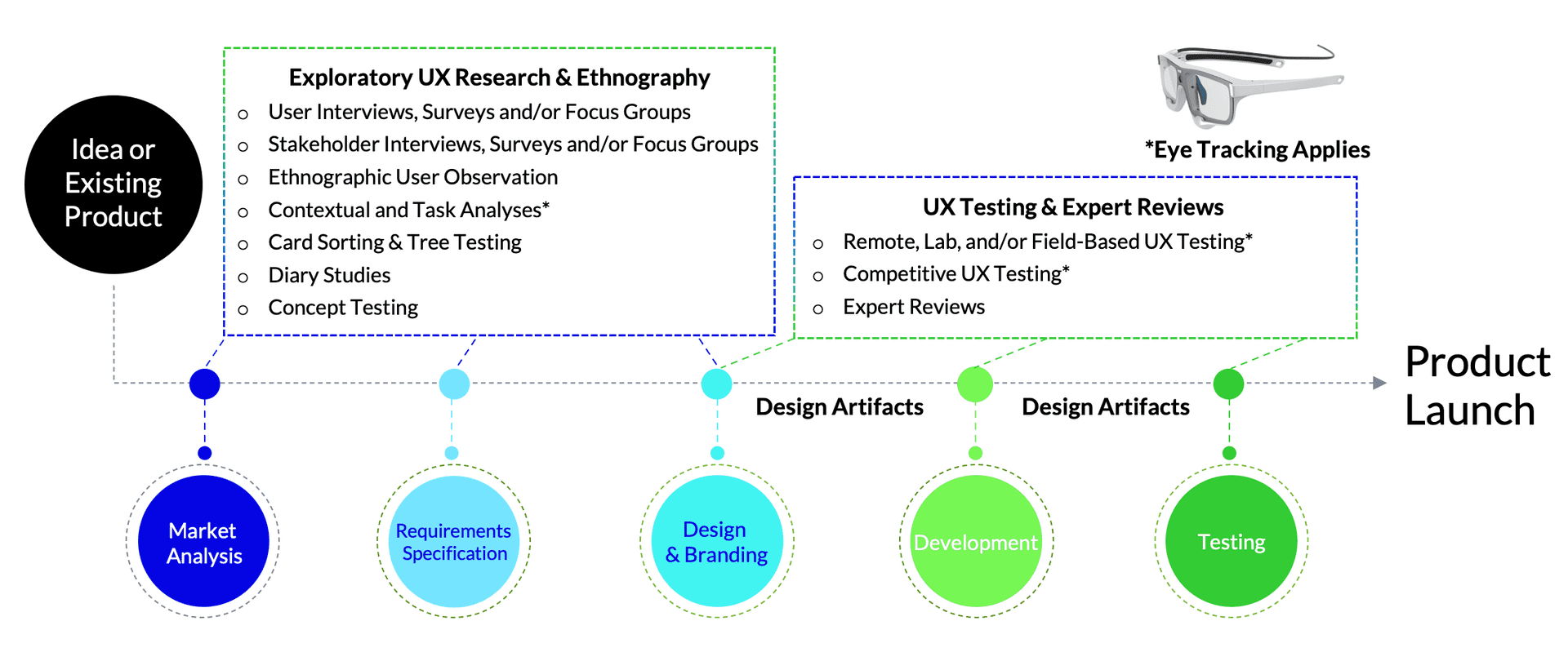


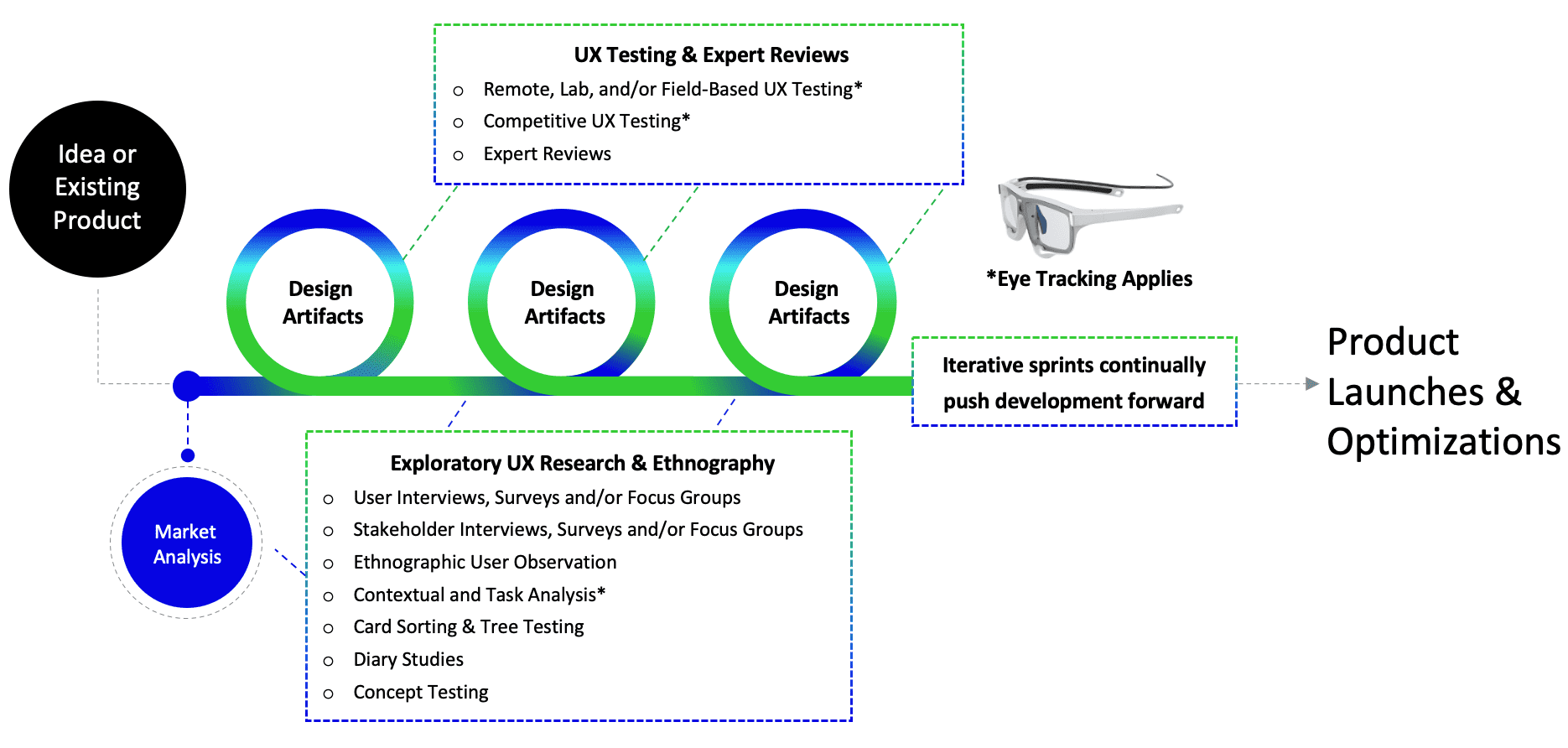



We can employ state-of-the art eye-tracking technology to many of our services. Virtually any UX test can be enhanced by equipping participants or devices with eye-tracking equipment that enables us to observe what they look at, in what order, and for how long. This adds an invaluable layer of data, which unveils users' involuntary thoughts and behavior, so you know what they see and what attracts their attention, in addition to what they do.
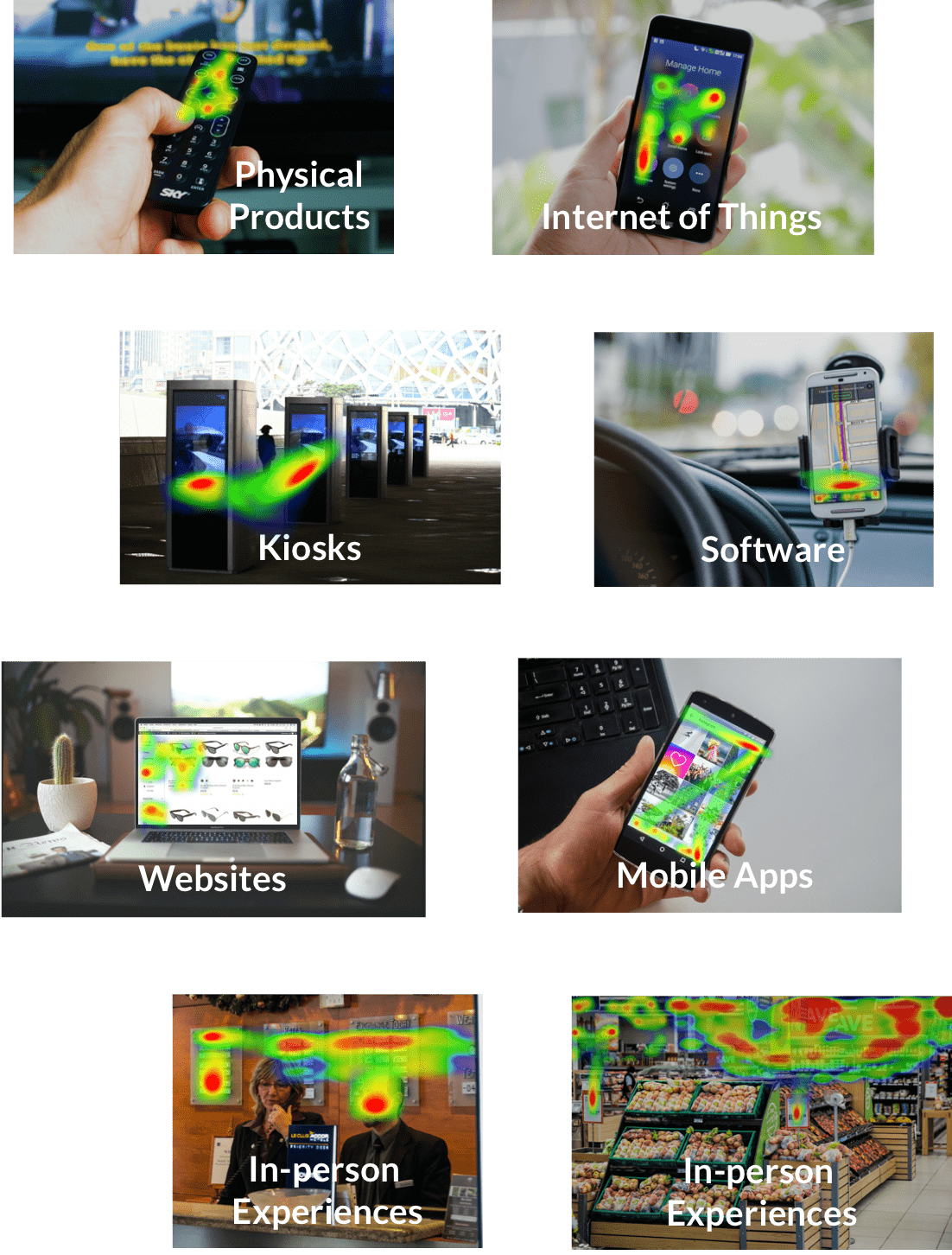


Remember, a user is anyone interacting with a product, system, or service. Upon contemplating UX, most people automatically think of their current and potential customers and that's fine because much UX work is outward facing. But it's important to remember that your current and potential employees, contractors, and vendors / suppliers are also your users. Furthermore, that these users are often forgotten and lost in the shuffle, when it comes to UX practices. Therefore, it's important to remember that our services apply to outward as well as inward facing users, depending on what aspect of your company's UX you'd like to improve.
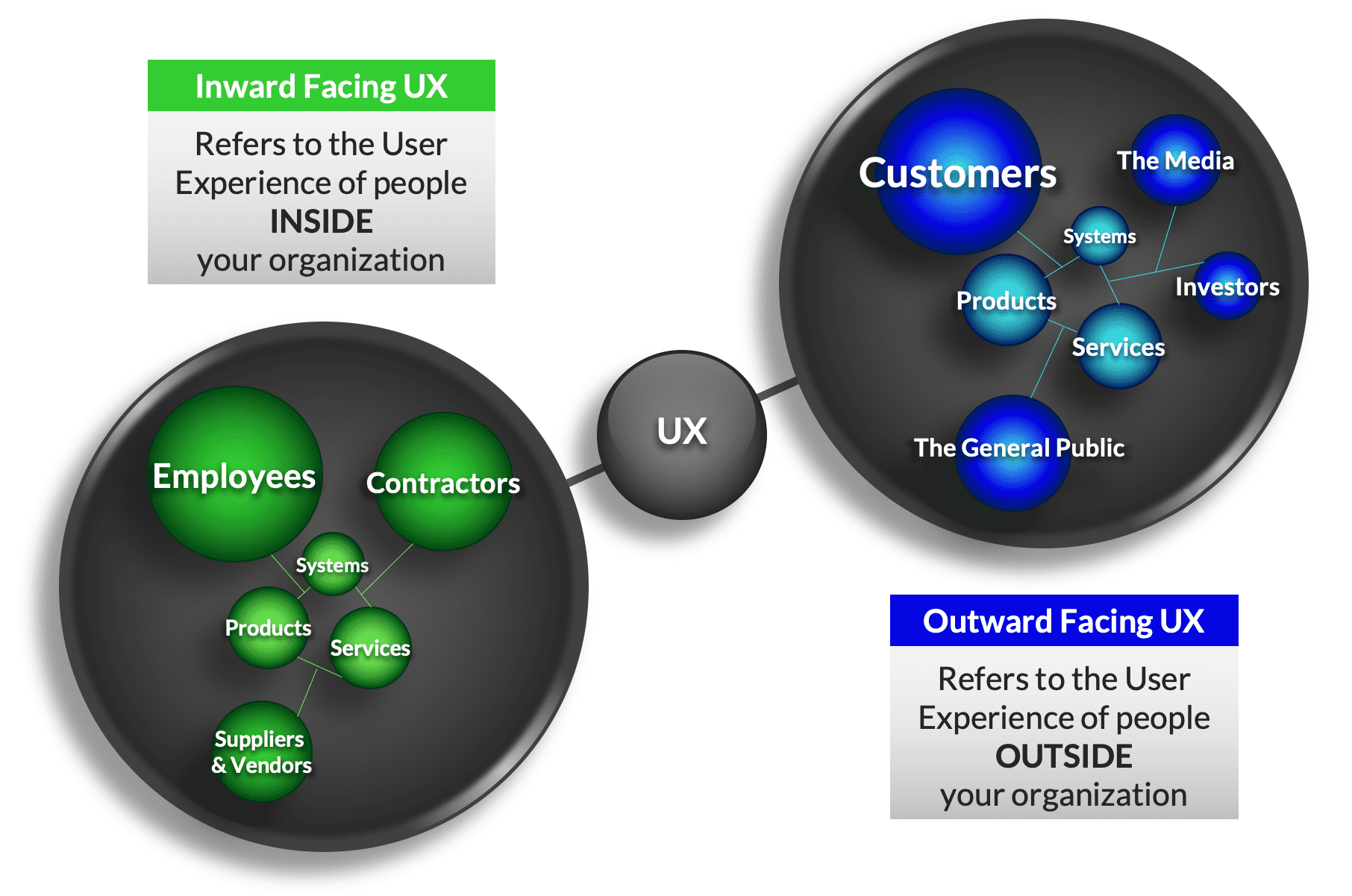
If you haven't dispatched professional UX researchers to independently study the interactions that all these different types of users have with your organization, then you're missing out on some excellent learning opportunities. Our consultants discover the unknown UX issues affecting your organization and/or illuminate known issues in a way that helps you build a business case to fix them. Let's dive into these different types of users a bit more.
How are you evaluating the UX of your customers? Meeting their needs and expectations, if not exceeding them, is critical to your survival and growth. You can't stay in business without them. The more you know about how to better solve their actual and perceived problems, the better the experience you can provide and that's good for business in a multitude of ways. You're likely assessing customer experience (CX) at a macro-level, perhaps through NPS scores, surveys, social media, analytics, feedback forms, focus groups, and other means, but how are you evaluating USER Experience? UX Research is more reliant upon direct, in-the-moment observation, than the aforementioned indirect methods which characterize the fields of customer experience and marketing today. Our more modern, and powerful, methods compliment all of those and illuminate specific opportunities to enhance the experience that customers have with your products, systems, and services so you know how to better serve them. We uncover the unknown so you're aware of what to fix and can chart a smarter, more profitable, and more expedient path forward.

Not only are these other people your users too, but they are integral to your operation and they depend on your internal systems to efficiently and effectively do their jobs.
All too frequently, employees and contractors are saddled with yesterday’s technology, which is not only frustrating but requires training and wastes tremendous amounts of time every year across organizations.

Your organization relies upon goods and services from vendors / suppliers that have downstream effects. As with your employees and contractors, these people are oftentimes dependent upon archaic internal systems, which suffer from long neglected UX too.
From cumbersome software interfaces to preventable communication mishaps, there are likely several UX issues causing you to experience costly business problems. Find out what they are by contacting us today!

Do you know exactly what's frustrating customers when they use your products, systems and services? What barriers are preventing more efficient use? More effective use? More successful use?
UX Research illuminates these types of issues, aka opportunities, so you know what to fix to make your customers happier and more productive.

Not only are these other people your users too, but they are integral to your operation and they depend on your internal systems to efficiently and effectively do their jobs.
All too frequently, employees and contractors are saddled with yesterday’s technology, which is not only frustrating but requires training and wastes tremendous amounts of time every year across organizations.

Your organization relies upon goods and services from vendors / suppliers that have downstream effects. As with your employees and contractors, these people are oftentimes dependent upon archaic internal systems, which suffer from long neglected UX too.
From cumbersome software interfaces to preventable communication mishaps, there are likely several UX issues causing you to experience costly business problems. Find out what they are by contacting us today!

Do you know exactly what's frustrating customers when they use your products, systems and services? What barriers are preventing more efficient use? More effective use? More successful use?
UX Research illuminates these types of issues, aka opportunities, so you know what to fix to make your customers happier and more productive.

Not only are these other people your users too, but they are integral to your operation and they depend on your internal systems to efficiently and effectively do their jobs.
All too frequently, employees and contractors are saddled with yesterday’s technology, which is not only frustrating but requires training and wastes tremendous amounts of time every year across organizations.
Remember, UX doesn't stop at the customer. Are you also assessing UX for your employees, contractors, and vendors / suppliers? How many ‘user errors’ by these internal people result in sluggish processes, rework, and business problems that could have been prevented by offering a superior User Experience for them in the first place? Who pays for these problems? Your organization does. The stifled productivity arising from bad UX for your internal people isn’t something you can afford to ignore. From company intranets to various types of dashboards, information repositories, resource management systems, reporting tools, and clunky communication mechanisms, almost every organization is rife with internal UX problems.
The point here is to remember how broad this field is and that we are just as comfortable investigating inward facing UX as outward facing UX. They go hand in hand. Contact us today for a fresh and independent approach to identifying the use-related issues that are keeping your business from the proverbial next-level!
